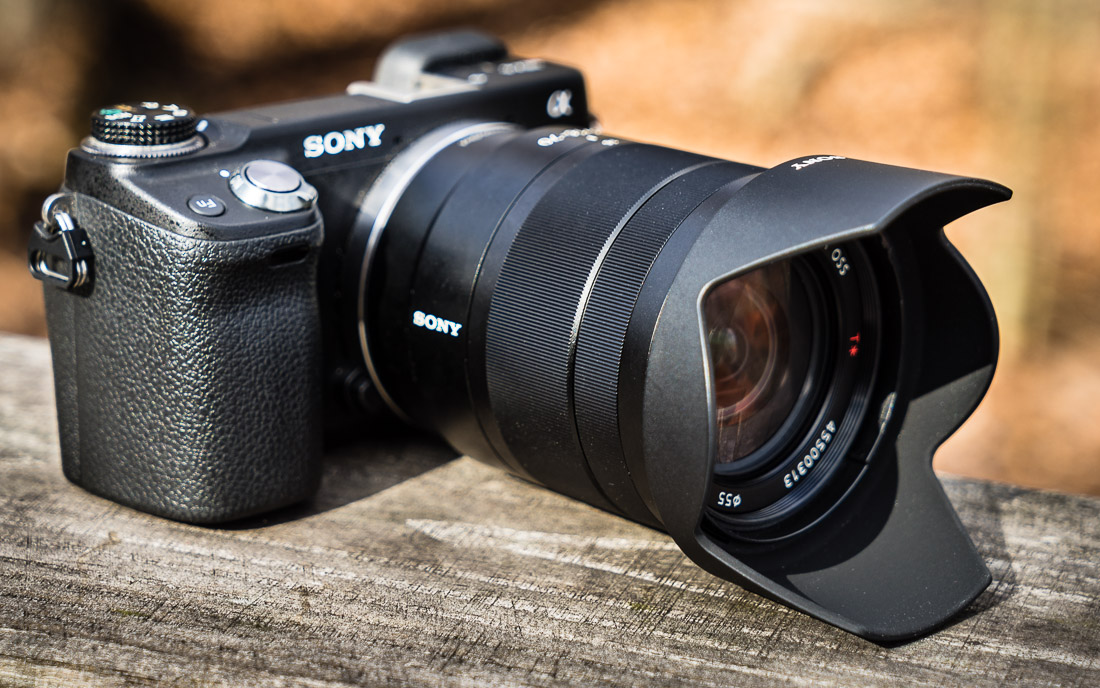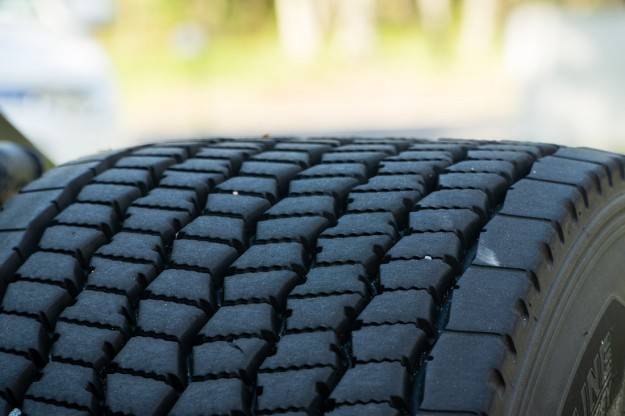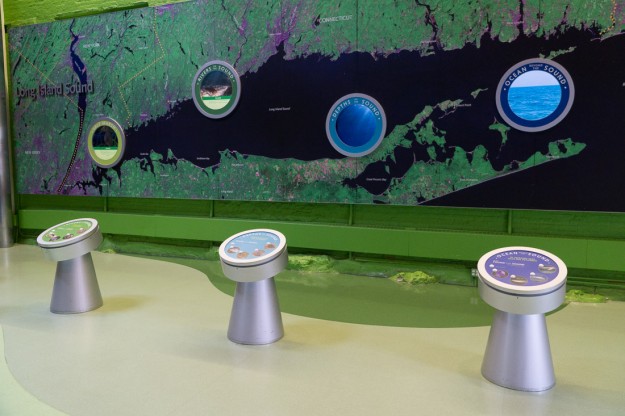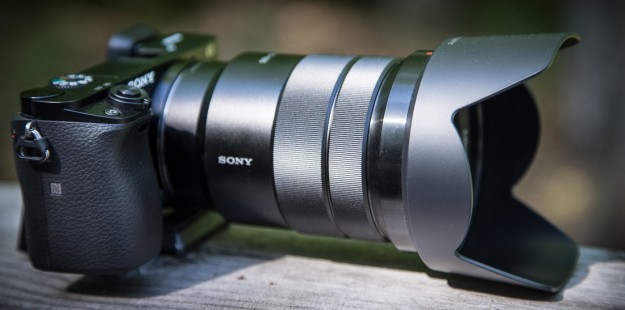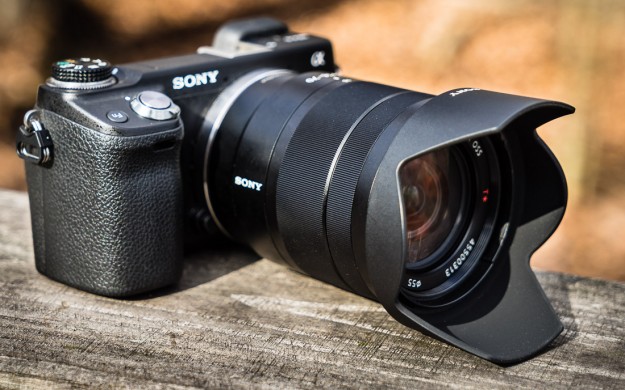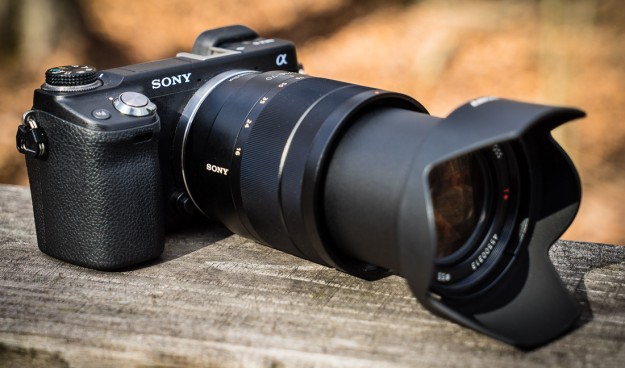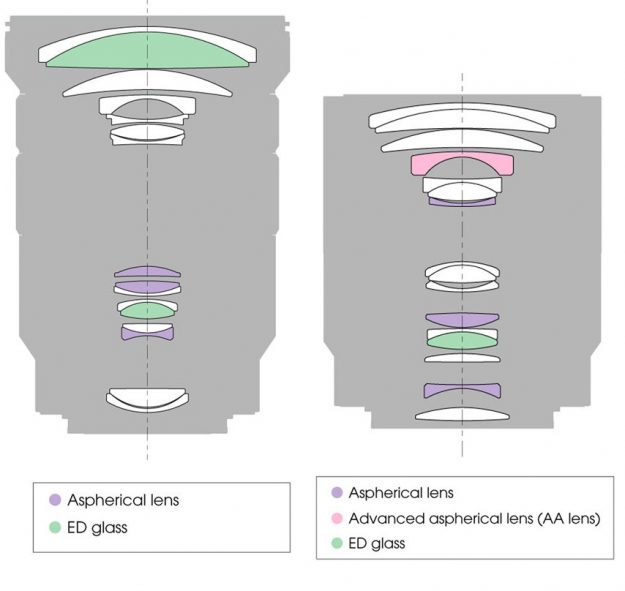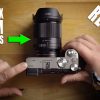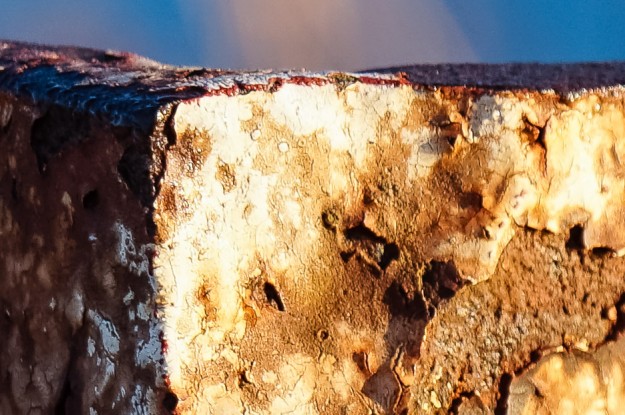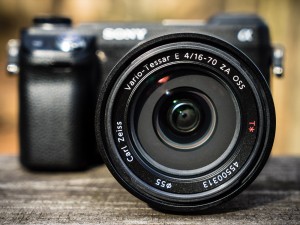I get this question all the time, so I figured I would write a quick article explaining the differences between the Sony PZ 18-105mm f/4 OSS G Lens vs Sony Vario-Tessar T* 16-70mm f/4 ZA OSS Lens.
Both lenses are designed for the smaller sensor APS-C E-Mount cameras like the Sony A6500, A6300, A6000 and A5100 for example.
These lenses will also work, in crop factor mode, on the full frame E-Mount cameras like the A7r Mark II, which also happens to have the Super 35mm Mode video option. Super 35mm Mode is basically killer video quality, but it uses only the crop factor size area of the sensor, therefore a crop factor lens is a usable option for this feature in particular.
Both of these lenses offer versatility, but one is about $400 more than the other and has a Zeiss badge on it 😉 The other has a killer powerzoom feature, significantly more range, and costs hundreds less. So this is why so many of you are perplexed at which lens to get.
Which is better and why? What gives??
I will try my best to show the strengths and weaknesses of both lenses, so you can make an informed decision on your own based on all the information provided.
Key Features and Differences:
| E PZ 18-105mm OSS G Lens | VS | E 16-70mm f/4 ZA OSS Lens |
| APS-C – E | Format | APS-C – E |
| $598 | Price | $998 |
| 27-157.5mm | 35mm equev Range | 24-105mm |
| 15 to 76 degrees | Field of View | 23 to 83 degrees |
| f/4 | Max Aperture | f/4 |
| 15.06 oz (427 g) | Weight | 10.86 oz (308 g) |
| 72mm | Filter Thread | 55mm |
| 3.07 x 4.33″ (78 x 110mm) | Smallest Size | 2.62 x 2.95″ (66.6 x 75mm) |
| Yes | Power Zoom | N0 |
| 16 Elements / 12 Groups | Lens Elements | 16 Elements / 12 Groups |
| 17.72″ (45 cm) | Min Focus Distance | 13.78″ (35 cm) |
| 7 – Rounded | Aperture Blades | 7 – Rounded |
My Sony E-Mount Lens Guide >>
Price:
Both of these lenses are on the higher end of pricing with the Zeiss tipping the scales at $998 US vs the more modest $598 US for the Sony G lens. Neither are exactly cheap, but the Sony G lens offers more coverage and is less money. Let me explain…
Zoom Range:
So for starters the 18-105mm f/4 OSS G lens has 35mm more zoom than the 16-70mm lens. This means a significant reach advantage as far as telephoto photography is concerned. With the crop factor in play this works out to an effective 27-157.5mm (18-105mm) vs 24-105mm (16-70mm).
On the wider side we have the extra 2mm from the Zeiss lens (16mm vs 18mm), that does help a lot in the real world when shooting in tight conditions wanting that wide angle view. 2mm does not sound like much, but it is a lot in my opinion on the wide end. 2mm would not do so much on the telephoto end in comparison though.
Clearly we have something significant to talk about as far as focal range differences go. It really depends on your wants/ needs.
Physical differences:
The 18-105mm g lens is all self contained, meaning when you zoom the lens does not extend. It’s all internal and therefore physically larger than the 16-70mm lens as you will see below:
Approx. 3.07 x 4.33″ (78 x 110 mm)
Approx. 2.62 x 2.95″ (66.6 x 75 mm) – not extended
When fully extended the Zeiss 16-70mm f/4 OSS Lens is actually longer than the Sony PZ 18-105mm OSS G Lens which is worth noting. The Zeiss lens extends outward as you zoom, but the Sony G lens does not as mentioned above. Here she is mounted to my Nex-6 @ 70mm and you can see just how much the lens grows in size. When packed away in the camera bag, it is smaller though which is important to many wanting the smallest form factor possible when stowed away.
Here are the internals and note the Advanced aspherical lens element (AA) the Zeiss Lens has.
Weight
Weight wise, the 18-105mm lens is a notable heavier @ 15.06 oz (427 g) vs 10.86 oz (308 g)
Optical Quality:
Here is where the Zeiss starts to show it’s true strengths over the Sony G lens in my opinion. The Sony PZ 18-105mm f/4 OSS G Lens suffers from some significant lens distortion. This is the compromise Sony decided to make when creating a lens with this much range in a relatively small self contained form factor including OSS and the killer powerzoom feature.
The E 16-70mm f/4 ZA OSS Lens also has the T* Lens coatings which helps with contrast and color rendition in particular, and it’s noticeable in my opinion. The Zeiss lens pumps out better more punchy contras and color when comparing all the photos in each review.
If shooting Raw quality you will notice the distortion on straight lines mostly and more towards the corners. Sharpness is very good on the 18-105mm lens although it does soften a bit in the corners for sure. Overall a great lens for the money I would say considering the range and features included.
Both lenses have a constant f/4 aperture throughout the zoom range.
The 16-70mm f/4 OSS ZA lens does not suffer from the same distortion and is remarkable sharp corner to corner based on my testing. The contrast and background out of focus areas also look better on Zeiss lens and you can see the “look” for yourself in the tons of sample photos I have in both reviews linked below.
Other Factors like Video:
The PZ 18-105mm f/4 OSS G lens offers a powerzoom feature that really makes this lens ideal for video use. In that regard, this lens is way better than the Zeiss for smooth zooming while recording video. This is the best feature of the 18-105mm lens in my opinion, and would heavily influence my decision making. If I was strictly only interested in photography, then the 16-70mm Zeiss lens would be my first choice. If I liked to record video, then I would go with the 18-105mm G lens for the killer powerzoom feature and overall good quality plus lower cost.
[divider]
Full Lens Reviews:
I have tons of sample photos and video in the full lens reviews kinked below, so be sure to check them out if you want to see what each lens can do in the real world and lab more clearly. You will be able to see the optical quality differences for example by viewing the lab test photos in particular.
– Sony PZ 18-105mm f/4 OSS G lens Review >>
– Sony Vario-Tessar T* 16-70mm f/4 OSS ZA Lens Review >>
Closing remarks
If you are a photographer looking for the best quality and versatility, then the 16-70mm f/4 OSS ZA Lens is the one for you in my opinion. If you like to shoot in RAW quality and process your photos in house, then again I would recommend the Zeiss for much better optical distortion control and overall optical quality. The colors are noticeable more rich, the contrast has more punch, and the sharpness is better. The “look” is also better in my opinion, but hard to actually measure that with a number…
If you are a jpeg shooter and allow the camera to process the photos for you, then the Sony 18-105mm f/4 OSS G lens is a great choice. The Camera will correct for the lens distortion when shooting in Jpeg mode or when recording video. Therefore the distortion is not to much of a factor if that is your situation. I shoot RAW quality most of the time and the distortion would bother me most likely for example.
Video wise, I would highly recommend the 18-105mm lens, because the powerzoom is amazing and the output quality is very good. The on camera lens correction works really well. Clearly it does have an effect on quality though, and the trained eye will be able to see these differences. The 18-105mm lens also costs significantly less than the Zeiss, so be sure to look over all the factors when making your decision.
That is about it for this article, but please feel free to ask questions if you have them or just share your thoughts on the matter if you like 😉 I tried to cover all the things that matter as concisely as possible. Hopefully I achieved my goal, and please let me know in the comments below what you guys think!
Have a great day,
Jay
Lens Links:
Sony PZ 18-105mm f/4 OSS G lens for $598 US @ BHPhoto | Amazon
Sony Vario-Tessar T* 16-70mm f/4 ZA OSS Lens for ~$998 US @ BHPhoto | Amazon
I also have a new way for fans to support SonyAlphaLab if you are interested: Patreon is a way for content creators to get rewarded for their hard work. In todays internet climate, it’s getting really hard to make enough money off the ads to pay for the server costs and other security upgrades that are constantly needed. If you are interested in helping out, check out my Patreon Page here >>


